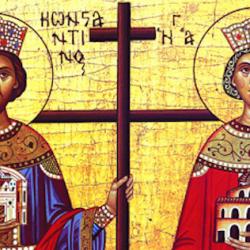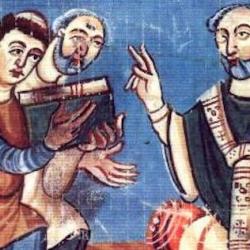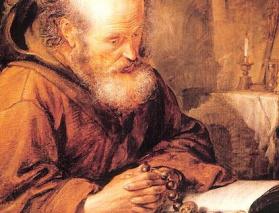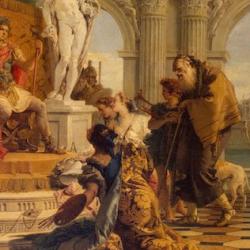John van Engen argues in a 1986 article that the romanticized “legend of the Christian Middle Ages” doesn’t hold up to historical scrutiny. Until the Reformation and counter-Reformation, Europe was only superficially Christianized, full of paganism and quasi-pagan “residuals” from pre-Christian cultures. Besides, the vision of a unified, deeply Christian Middle Ages is the vision of the Christian elites, those who could write.
In place of the Christian Middle Ages, historians like Gabriel Le Bras and Jacques Le Goff have left us with a “folklorist” culture, not unlike the tribal cultures studied by anthropologists. Or, we are left with a double medieval culture, the Christian culture of the elites and the pagan or syncretistic culture of lower classes.
Van Engen thinks that the reaction to the older paradigm is extreme, and shares the methodological flaws as the position it rejects. It is based on “a relatively meager harvest of materials,” so slight that historians “can produce a separate religious culture only by inferring from selected stories—admittedly, with striking parallels to Indo-European folklore—a supposed majority culture and by assuming that this culture remained essentially unchanged from prehistoric times to the late Middle Ages and beyond. This is no less dogmatic and ahistorical in its interpretive approach than the neo-Scholastic Catholic who inferred from Bernard or Thomas a thriving Christian culture across the whole sweep of the Middle Ages. . . . There certainly was much more to medieval religious culture than a naive reading of the prescriptive sources might suggest, but medieval Christianity is better conceived as comprised of complex and diverse elements spread across a very wide but more or less continuous spectrum. The burden of proof still lies with those who argue for two radically different religious cultures. For they must then also demonstrate—and not just assume—a disjunction between popular practice and ecclesiastical institutions, between ‘low’ and ‘high’ culture, so great and so absolute as to exclude any appreciation of mutual influence, thus driving a very deep and quite improbable wedge between religious mentalities and religious institution” (531–2).
(Van Engen, “The Christian Middle Ages as an Historiographical Problem,” The American Historical Review 91:3 [1986]: 519–552.)











